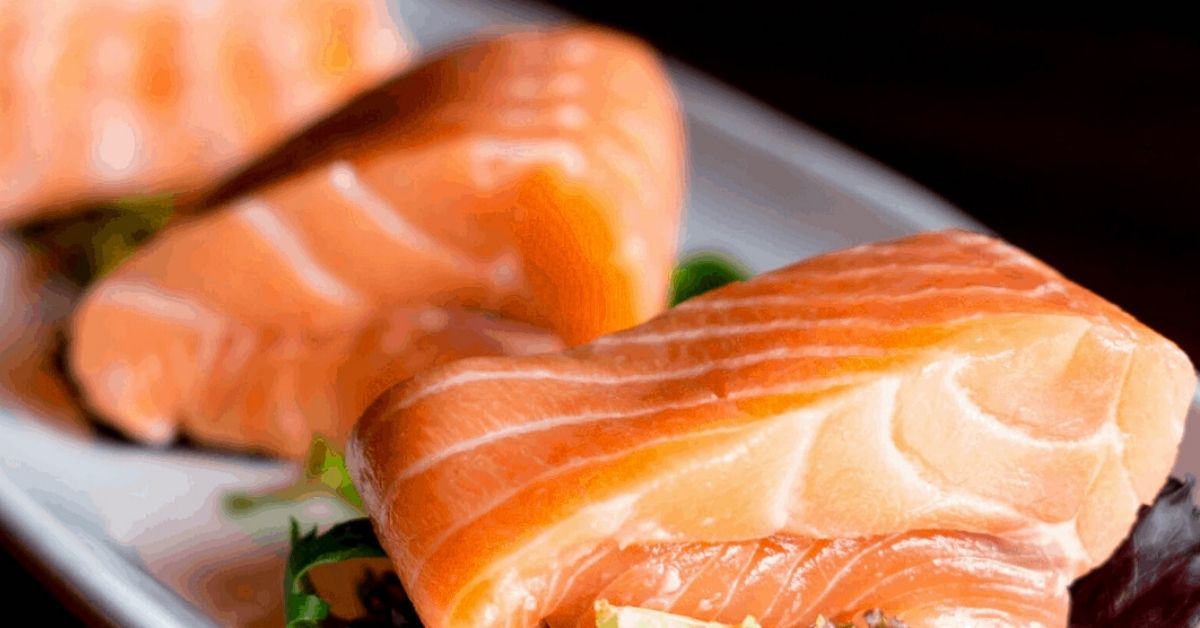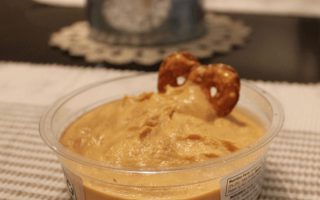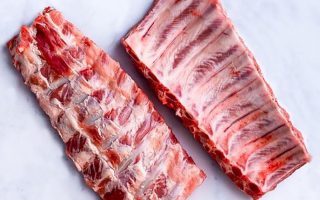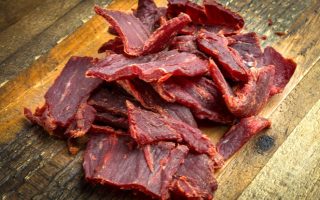Can dogs eat seafood is a question that comes to the minds of many. For the most part, this article contains everything you need to know, including the benefits and risks.
Seafood is actually very healthy and can be a part of a good diet for your dog.
It is necessary to know exactly what type of seafood your dogs can eat if you’re thinking about adding it to the mix.
Seafood is a very wide category, so you really do have to be careful with the kind of things you introduce to your dog.
With that said, any change to your dog’s diet should be discussed with your veterinarian.
What Seafood Can Dogs Eat?
Can Dogs Eat Salmon?
Fresh salmon is an amazing source of Omega-3 and vitamin D, and it’s also a great source of protein and minerals such as iron, potassium, and magnesium.
Salmon is very popular among dogs, so you can feed it to them raw and you can also find a lot of dog food options with the flavor and benefits of salmon.
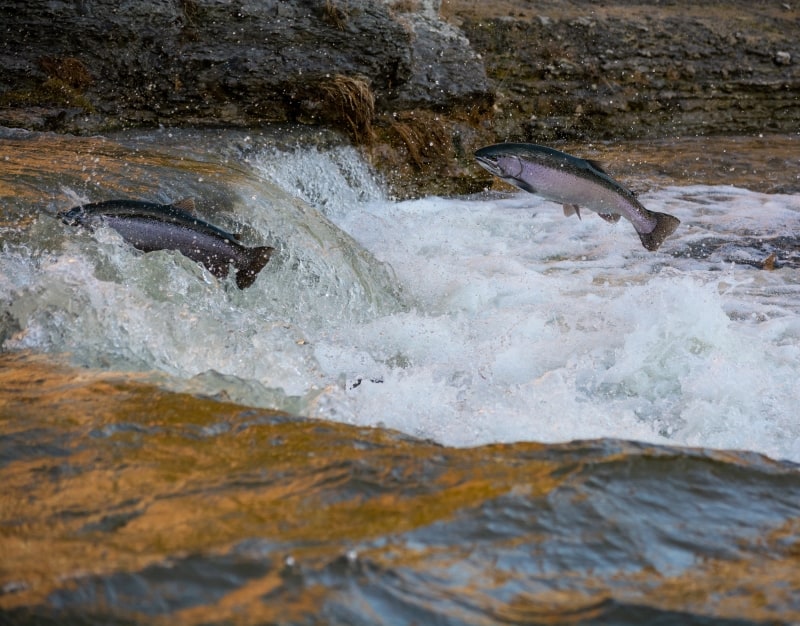
This fish can be very beneficial for your dog’s skin, coat, cognitive function and immune system.
If you want to incorporate it into your pup’s diet, don’t choose farm raised salmon because they contain a lot of antibiotics and high levels of Polychlorinated biphenyls which can be cancerous.
Buy wild caught to get the benefits you’re looking for, but be cautious nonetheless.
Food poisoning is a great risk because it’s caused by a common parasite found in salmon called Neorickettsia helminthoeca.
Freeze your fish for a couple of weeks to get rid of these parasites before you feed it to your dog.
Can Dogs Eat Mussels?
The green lipped mussels originate in New Zealand and they’re very rich in Omega fatty acids, amino acids, minerals, vitamins, antioxidants, and enzymes.
They can help with strengthening joints, joint mobility, and cartilage maintenance.
In fact, they’re known for being able to relieve pain and inflammation in dogs that suffer from arthritis and even promote cardiovascular health and healthy skin.
Buy green lipped mussels powdered and follow the instructions on the package or give your dog about 15mg per lb.
Make sure there’s no heat processing involved because that destroys all the nutrients of the mussels and we don’t want that.
You can also buy freeze-dried green lipped mussels treats and give 2 of them for every 10 lbs. per day.
Don’t Miss: Can My Dog Eat Hummus
What Kind of Fish Can Dogs Eat?
Fish, as we all know, is one of the biggest sources of protein, selenium, Omega-3 fats, calcium, and niacin.
Fresh fish is better than opting for fish oil which can be unstable.
The only problem is that large fish are more likely to be contaminated with mercury and PCBs (polychlorinated biphenyls) which are dangerous toxins and carcinogenic chemicals.
If you want your dog to get the benefits without the risks of toxins, then the solution is to give your dog small fatty fish instead.
Some examples of this are sardines, mackerel, anchovies, herring, and smelts.
Before introducing them to your dog’s diet, it’s recommended to freeze them for two weeks to get rid of any parasites.
You can feed these to your dog two or three times a week and they can be eaten whole and raw.
If you can’t buy fresh, you can go with the canned version. Make sure there’s no added salt and that they are packed in water.
A way to measure the amount is by giving your 40-50 lbs. dog a quarter of a 3.75 oz can per day.
This, of course, should be accompanied by other foods.
Seafood To Be Cautious With
Can Dogs Eat Shellfish?
Technically, your dog can eat all kinds of shellfish like shrimp, mussels, clams, and oysters.
Shellfish are full of nutrients thanks to the environment they grow up in which is mineral-rich waters.
The only problem is that your dog can easily be allergic to shellfish without your knowledge.
Is Shrimp OK for Dogs?
Fresh, wild shrimp is the best choice to share with your dog.
Farm-raised shrimp pose a bit of a problem because farmers use disinfectants, antibiotics, and pesticides.
Those chemicals serve the purpose of preventing shrimp disease, but they can be very harmful.
It’s important to know where your shrimp comes from!
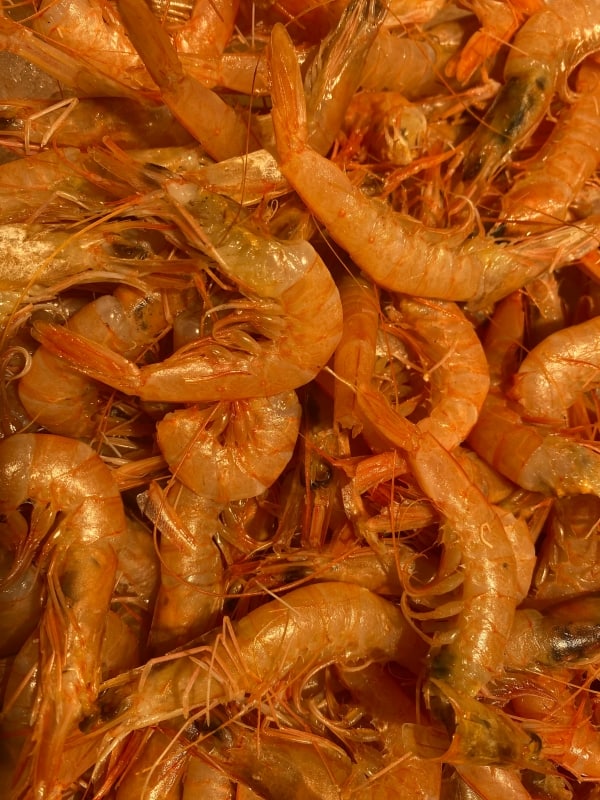
Can Dogs Eat Clams?
Clams, oysters, and mussels, among other things, are bivalves and they are rich in vitamin B12, protein, minerals such as zinc, copper, calcium, selenium, iron, phosphorus, selenium, and Omega-3 fats.
Bivalves are found towards the bottom of the food chain so there’s not as much risk of metal contamination as there is with large fish.
Bivalves are filter feeders which means they can absorb toxins from microalgae.
These toxins can affect muscle function and they can cause paralytic shellfish poisoning (PSP).
Make sure that they come from cooler waters and choose suppliers that test their product for contamination to ensure that your bivalves are toxin-free.
Is Squid Oil Good for Dogs?
Squid oil is getting more and more popular as an alternative to fish oil, and it’s a great source of Omega-3 fatty acids which is great for your dog’s skin and coat as well as their nervous system and cognitive function.
It also contains DHA which has amazing anti-inflammatory properties.
Because squids don’t have bones, they’re found near to the bottom of the food chain.
They’re commonly free of contaminants, but this greatly depends on the source.
When it comes to squid oil, the problem is that oils are unstable, and they can turn rancid really quick. This applies to all kinds of fish oil.
Make sure it’s micro-filtered to make sure there are no heavy metals or toxins.
After you open it, refrigerate and use it within 90 days.
You can give your dog ¼ tablespoon per 20 lbs. of body weight every day.
What Seafood is Bad for Dogs?
Can Dogs Eat Fish Oil?
Even though fish oil of any kind is a popular supplement for dogs, the charm ends the moment you open the bottle and sometimes even before then.
Fish oil is vulnerable to oxidative damage, so when the Omega-3 fat particles are exposed to air, they break down and create other compounds that can damage proteins, DNA, and other cellular structures.
This can lead to chronic health problems such as cancer and gene mutation.
Fish oil can also contain heavy metals that can be damaging to the nervous system, lover, and kidney damage.
There are other contaminants that can be found in fish oil, such as PCBs and dioxins that can cause a lot of problems in the immune and nervous system, skin problems, cancer, reproductive disorders and endocrine disorders.
The safest thing is to avoid fish oil, but if you still want to use it, make sure the one you use has a Certificate of Analysis.
Use it quickly, keep it refrigerated and don’t buy clear bottles.
Keep in mind that every time you open the bottle, there’s more and more oxidation and the risks health are greater.
Can Dogs Eat Krill Oil?
Krill oil is considered a safe alternative to fish oils, but that’s far from the truth.
It’s true that krill oil is a bit more stable than other fish oils, but it’s still subject to oxidation once you open the bottle.
Krill oil contains a natural antioxidant called astaxanthin, which is responsible for krill oil’s shelf life.
But this antioxidant degrades very fast itself, so it won’t protect the oil for long.
Can Dogs Eat Tilapia?
Tilapia is quite a popular fish thanks to its mild flavor and cheapness.
That’s what makes it the fourth most consumed seafood in the US, right after shrimp, tuna, and salmon.
For this reason, it’s one of the most farmed fishes in the world.
The fact that tilapia is farmed, means that its nutrient profile is not as high-quality as one may think.
Long story short, the food that they get is not enough to produce Omega-3s because they are missing the phytoplankton from their diets and in most cases, the food that they get is low quality.
They’re also raised in overcrowded muddy ponds, which means that there are a lot of pesticides involved.
Tilapia is also said to be worse than bacon because it’s rich in Omega-6s.
Can Dogs Eat Large Fish?
When we talked about small fatty fish earlier, we mentioned that large fish should be avoided because they have a higher chance of mercury contamination.
We can’t actually escape mercury because it’s all over our waters courtesy of industrial waste.
This means that it’s present on higher levels in larger fish that can be found high up on the food chain.
Because they are predators and eat so many other smaller creatures, there’s an accumulation of mercury in their system.
This makes large fish a big no-no for our dogs as they can cause major health issues such as nervous system disorders, endocrine issues, accelerated aging, and reproductive problems.
Don’t Miss: Can Dogs Eat Limes
Benefits of Seafood for Dogs
The only problem is that you have to pay close attention to the kind of seafood you choose for your dogs.
Above all, we want them to be safe.
If you don’t want to integrate seafood into your dog’s diet in a permanent manner, it’s still wise to include seafood in your dog’s meals from time to time.
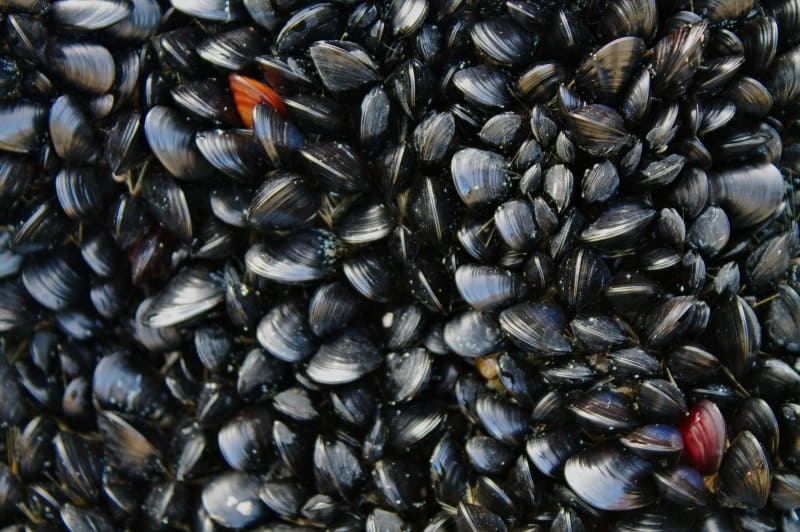
Seafood provides:
- Omega-3 fatty acids
- Vitamins A, B12, D, B1, B3, E, biotin
- Minerals such as potassium, zinc, iron, magnesium
- Anti-oxidants
- Fiber
- Protein
- Healthy Carbohydrates and Fats
All of these things combined promote heart health, skin and coat health, digestive health, joint health, energy, among many other things.
Fish is also an amazing alternative for dogs that are allergic to other sources of protein.
There’s only so many bases that vegetables alone can cover, so fish is a great way to provide your dog with the animal protein they need so much.
Risk of Feeding Seafood to Dogs
If we are not careful with the kind of seafood we provide to our dogs, the risks can easily outweigh the benefits.
Not all seafood is positive and full of nutrients, minerals, vitamins, and healthy carbs and fats.
Some types of seafood can even be harmful, so it’s necessary to choose the right type keep an eye out every time we introduce something new into their seafood diet.
As mentioned before there’s a high risk of ingesting toxins, heavy metals, and other pollutants.
There are ways to avoid these, such as investigating our providers, choosing wild fish instead of farm bred, going for small fish and picking those that are found at the bottom of the food chain.
When it comes to commercial pet food with fish, you have to be careful and make sure they don’t contain harmful preservatives.
This is one of the main points you should discuss with your veterinarian when you talk to them about introducing seafood into your dog’s diet.
They will tell you what things you should avoid, how often and how much seafood you should give your dogs, and what to do in case of an unexpected allergic reaction.
Plus, when it comes to all kinds of food that are ingested raw, you have to be careful and cook them properly.
Raw food means there’s a high risk of contracting bacteria such as salmonella and listeria.
How to Prepare Seafood for Your Dog
You have to make sure that your seafood is cooked properly before you feed it to your dog because it can be contaminated with salmonella, listeria, Vibrio, and E. coli.
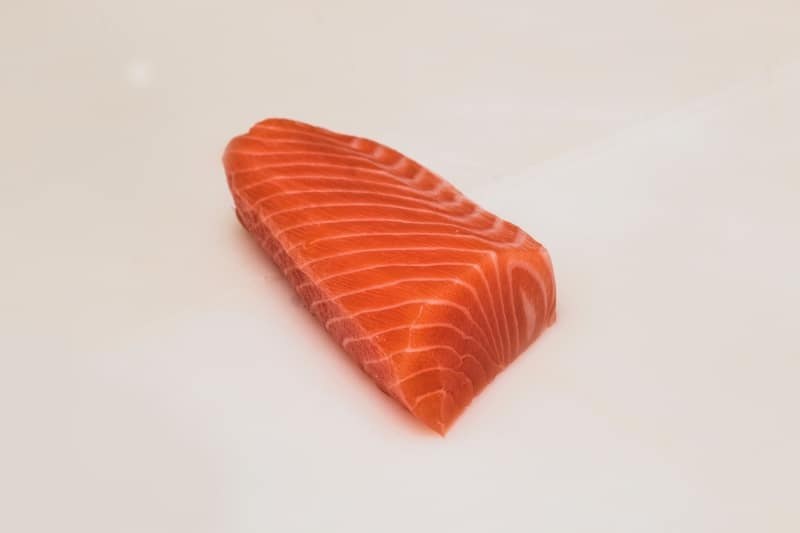
These bacteria are very common and dangerous, but we get rid of them by cooking our food properly.
The same applies to the food we feed to our dogs because they can cause severe infections that can even be lethal to your dog.
When cooking seafood for your pup, don’t season it because seasoning can easily upset their stomach and try to go for steaming as your cooking method.
That way you kill the bacteria and you keep the meal low calories.
How to Introduce Seafood into Your Dog’s Diet
Because the risk of seafood allergies is real not all dogs can eat seafood.
The smartest way to do this is to go slow.
Abrupt changes to your dog’s diet are never a good idea because you can easily upset their stomach.
Another reason to introduce seafood slowly is that fish has a very particular flavor and it’s likely that your dog won’t like it if it’s present all of a sudden in their meals.
The best way to go about it is to experiment at first with small portions and see if it’s something your dog enjoys.
Start with canned sardines, tilapia, and even canned salmon or tuna (remember that these last two are large fish and that they should be approached with caution and care).
Once your dog gets used to seafood, you’ll be able to use it a lot more frequently and you’ll be able to play a round with it a bit more.
If you don’t do this, you might be taking the risk of creating deficiencies of all the key nutrients that your dog needs to stay healthy.
Remember that commercial pet food is created by scientists who understand what your dog needs to have a balanced and healthy diet, so you might want to consider opting for a commercial, fish-based dog food.
Best Seafood Dog Food and Treats
Nutri Source Grain Free Seafood Select Dry Dog Food
Check Current Price (via Amazon)
The first choice we have is Nutri Source’s grain free seafood dry dog food.
This grain free recipe reduces the risk of food allergies, so it might be a great choice for your dog’s first time.
You can easily mix it with the food you already serve your dog and see if they like it!
Salmon is the main ingredient of this Nutri Source Seafood recipe and the good thing is that it’s all made from natural ingredients.
It contains no animal by-products or whole corn and it provides a ton of essential nutrients your dog needs to keep their health at its best.
Nutri Source Grain-Free Canned Seafood Dog Food
Check Current Price (via Amazon)
If your dog likes wet food better, then Nutri Source also has a canned version of the grain free seafood recipe you can try.
The case comes with 12 cans of around 13 oz each.
As mentioned above, Nutri Source recipes only use natural ingredients to ensure that your four-legged friends get all of the vitamins and minerals they need to keep up their health.
The same technique applies for the wet food; instead of giving them a whole can at once, try to mix in a bit of this Nutri Source seafood recipe into their usual meal and see how it goes.
Alaskan Salmon Jerky Dog Treats
Check Current Price (via Amazon)
These salmon jerky dog treats are a perfect way to introduce your dog to the flavor of seafood, more specifically salmon.
They are made with wild salmon from Alaskan waters so you know they are high quality!
Wild salmon is the best choice for your dog, so this is a safe treat.
The Alaskan salmon jerky treats are made with all natural and organic ingredients.
There are no antibiotics, coloring or growth hormones involved, so you can be confident that your dog is getting nothing but the best.
Tender & True Sustainable Seafood Ocean Whitefish & Potato Recipe
Check Current Price (via Amazon)
Tender & True offers you a seafood white fish and potato recipe that’s also a good choice to get your dog started on seafood.
The main ingredient of this recipe is wild whitefish.
Some of the ingredients include:
Whitefish, chicken meal, whitefish meal, dried potato, tapioca starch, chicken fat, dried beet pulp, chicken liver meal, chicken liver, salt, choline chloride, taurine, potassium chloride, ascorbic acid, vitamin E supplement, zinc proteinate, zinc sulfate, manganous oxide, manganese proteinate, inositol, ferrous sulphate, niacin, vitamin B12 supplement, zinc oxide iron proteinate, biotin, among many other beneficial ingredients for your pup.
Holistic Select Natural Grain Free Dry Dog Food
Check Current Price (via Amazon)
This Holistic Select natural grain free dry food is also a great choice.
It provides a balance, grain-free nutrition and the recipe is made from real salmon, anchovies, and sardines.
Apart from the benefits inherent in these fish, we have that the recipe is completed with all-natural ingredients.
That means there’s no artificial colors, flavors or fillers, and no wheat or meat by-products.
Holistic Select recipes are well-known for their natural fiber, digestive enzymes, prebiotics and probiotics that support digestive health.
Pure Paw Nutrition Grain Free Dog Treats
Check Current Price (via Amazon)
These Pure Paw grain free treats are another great choice to get your dog started on a seafood diet.
This recipe is also made with all-natural ingredients that include lobster and kelp. so it will provide a great number of vitamins and minerals for your dog to keep growing healthy.
Give your fur baby nothing but the best!
Polka Dog Bakery Single Ingredient Salmon Chips
Check Current Price (via Amazon)
These Polka Dog salmon chips make one of the best treats on this list.
It’s pure 100% wild Alaskan salmon so you can be confident about the quality and the beneficial properties of these treats.
This is a single source protein recipe and it’s rich in Omega fatty acids.
Yummy Chummies Dog Biscuits Treats Real Alaskan Seafood
Check Current Price (via Amazon)
Yummy Chummies biscuits are rich in Omega-3 fatty acids that promote a healthy heart, skin, and coat.
Their recipe is grain free, corn free, and soy free, so you won’t have to worry about anything.
These biscuits are soft and chewie and I’m pretty confident they’ll become one of your dog’s favorites.

